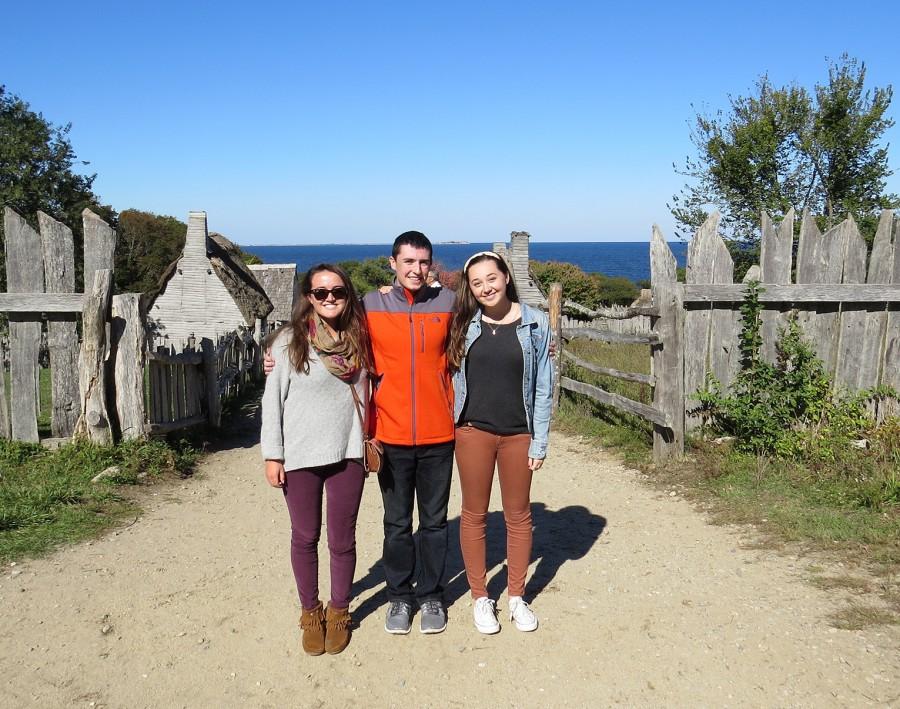Plimouth Plantation Experience
November 21, 2014
Walking into Plimoth Plantation is like strolling into the past. While it is designed to look like 17th Century Colonial Plimoth, it also brings back memories of field trips taken as a child. Plimoth Plantation is a perfect place to learn about the history that surrounds us on Cape Cod, and to have an enjoyable time taking in the scenery and fantastic actors that surround you.
The actors in the Colonial town are trained to answer questions as though they are truly pilgrims from the past. To our disappointment, they carefully deflected questions that tried to expose their true identities. While wearing authentic britches and caring for a full grown steer, a man who went by the name of George Soule said that he did not miss his home of London.
The overall experience, which was quite enjoyable, seemed to be entirely authentic. The smell of homemade corn pancakes wafted from homemade ovens and the actors thoroughly knew their characters’ stories. It was a submerging historical experience that gave us a different understanding from textbook readings in history classes. While onsite, it is easy to forget about modern troubles and focus on the unique experience.
From our brief visit, we learned about Elizabeth Hopkins’ journey to Plimoth. She told us about her husband’s search for prosperity and the difficult journey they had. While roaming around, we also saw Mistress Bradford shucking seeds for the upcoming winter and she told us about other ways they prepare for the difficult approaching season..
Plimoth Plantation is an ideal interactive setting to learn about the figures who shaped our country. Living and growing up on Cape Cod, the settling of the Pilgrims has been a topic heavily discussed from an early age. As children, we learned the main pull for colonists to travel to the New World was for religious freedom. However, the actors at Plimouth Plantation offered more reasons than just an escape from religious persecution. Samuel Fuller and Suzanne Winslow told us they journeyed over for land and economic opportunities. This personal contact helped us reform our preconceived ideas about the Pilgrims.
To our astonishment, there were even child actors at Plimouth Plantation. One girl around the age of ten helped her mother’s friend bake some cornbread and told us she journeyed over from England at the age of six.
On the other side of the plantation are the Native People. The Native People are different from the Pilgrims in that they are actual descendents from the Wampanoag tribe and are not roleplaying. Instead of acting, they help depict the Native American culture and share customs in an authentic and engaging way. The Native People are allowed to answer questions as their true selves and share their modern perspective.
The Wampanoag Homesite is an intriguing blend of history and reality. Surrounded by grand woodlands and recreated wetu structures, walking through the Wampanoag Homesite feels natural. The staff’s pride in their heritage is easily noticeable and helps contribute to the overall credible adventure. The authentic Native People eagerly answer any questions and discuss historical and modern issues and events of the Wampanoag people all while doing tasks like roasting deer meat on a spit and weaving reeds for their buildings structures.
We highly encourage you to make the trip to the educational site (this time without a fourth grade permission slip) and experience Plimouth Plantation in its entirety.


